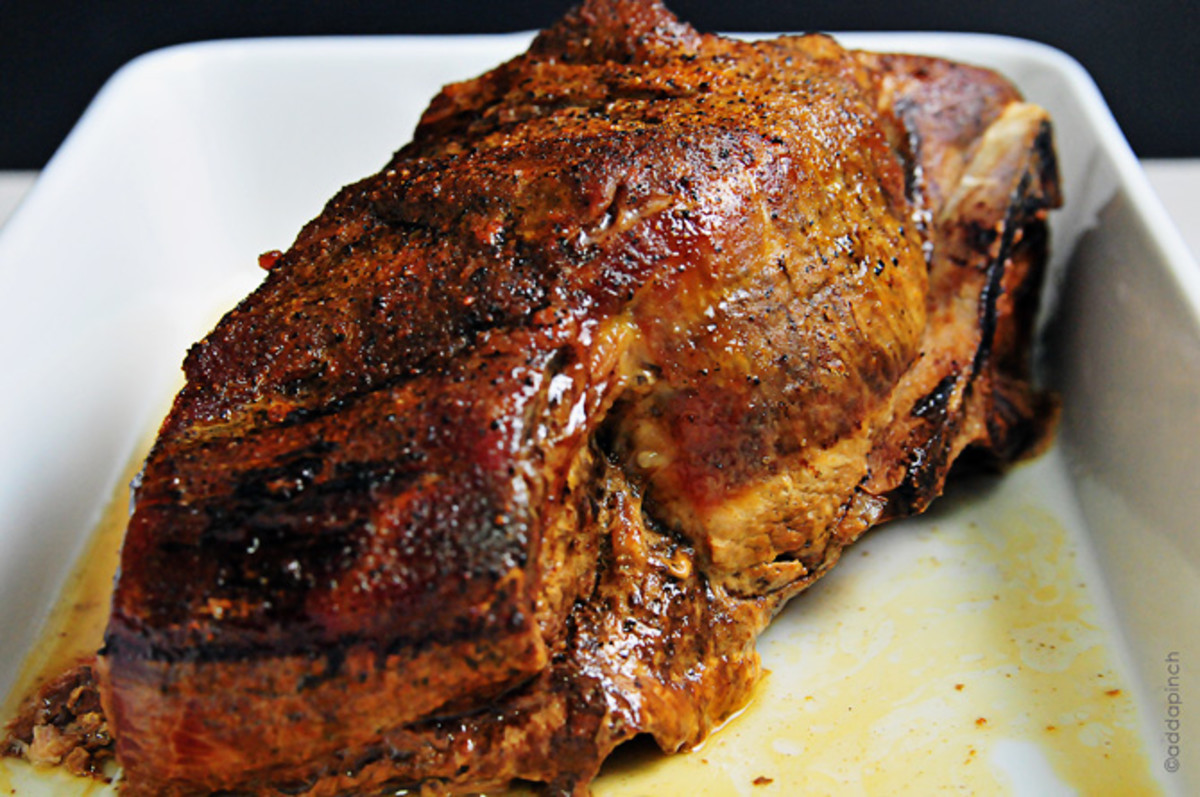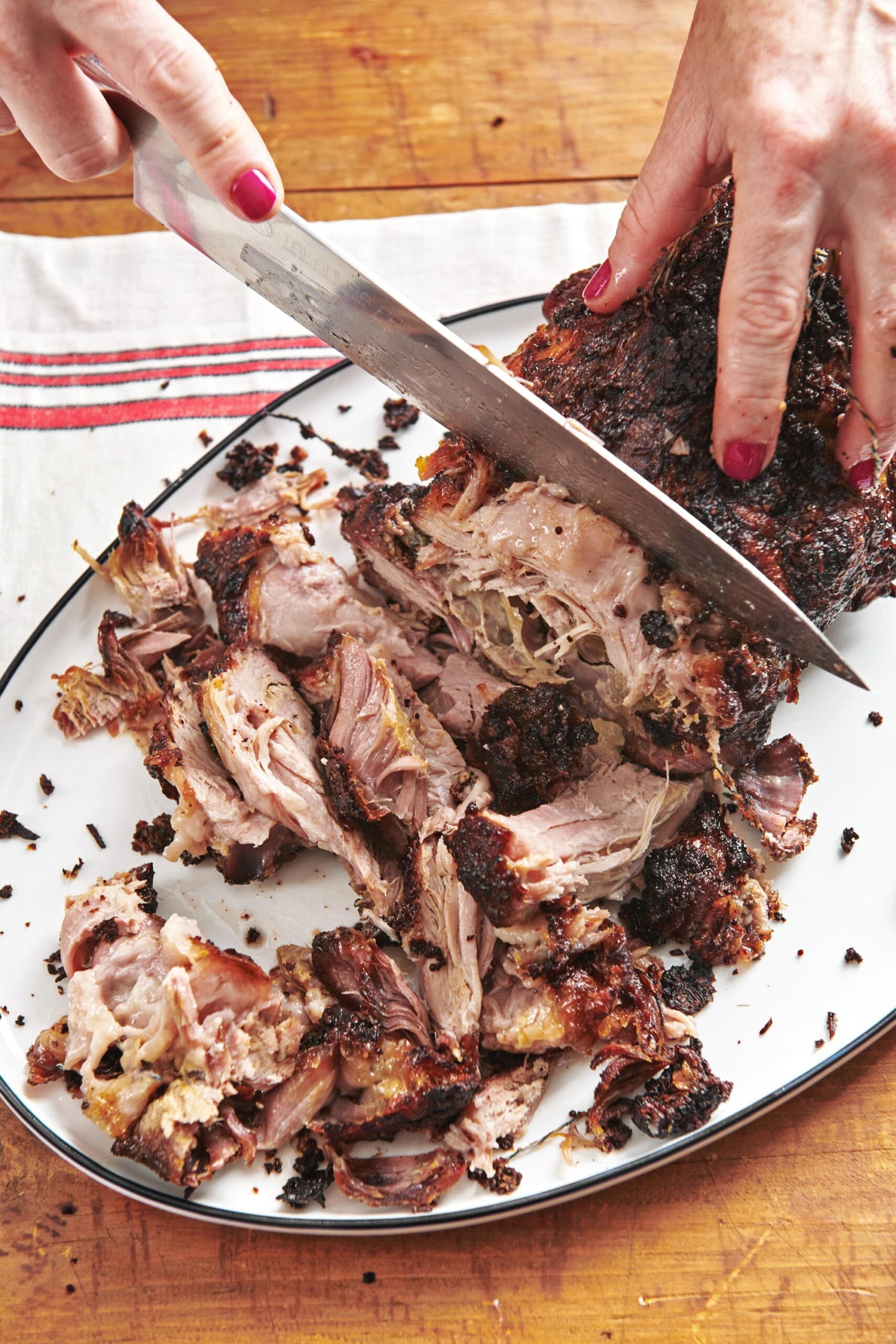A marinated pork shoulder or butt roast recipe that is slow-cooked and very tender. It tastes great on its own and can be used in a lot of different ways. One of my go-to dishes for casual crowd entertaining.
Cooking a boneless Boston butt pork roast may sound intimidating, but it’s actually quite easy and rewarding. With just a few simple steps, you can have juicy, fall-apart tender pork roast that will wow your family and guests. In this article, I’ll walk you through everything you need to know to make a perfect boneless Boston butt roast in the oven.
What is Boston Butt Roast?
Boston butt roast comes from the upper shoulder of the pig. It contains a good amount of marbling and connective tissue which makes it ideal for slow roasting. The name “Boston butt” comes from Colonial times when pork roasts were packed into barrels called “butts” for storage and shipping.
Despite the unusual name, it’s one of the most flavorful cuts of pork you can buy. When cooked properly the connective tissue melts into succulent and tender meat that pulls apart effortlessly. The key is cooking it slowly at a low temperature.
Benefits of Roasting Boneless Pork Butt
There are several advantages to roasting a boneless pork butt roast in the oven:
-
Requires minimal preparation – just season and pop it in the oven
-
Slow roasting transforms tough meat into tender, pull-apart pork.
-
Adds incredible depth of flavor as the pork cooks in its own juices.
-
More budget-friendly than expensive cuts like tenderloin.
-
Versatile for serving a crowd or for leftovers.
Choosing the Right Roast
For the best results when roasting, choose a boneless Boston butt roast that’s 3 to 5 pounds. This size ensures even cooking and serves 6 to 8 people comfortably. Look for a roast with good marbling – this keeps it moist during the long cooking time.
Step-by-Step Guide
Follow these simple steps for perfectly cooked boneless pork butt roast:
1. Prepare the Roast
-
Rinse roast and pat dry thoroughly with paper towels.
-
Trim off any large excess pieces of fat, leaving about 1⁄4 inch.
-
Poke holes all over the roast with a knife to enhance flavor absorption.
2. Season the Roast
-
Generously coat all over with a dry seasoning rub. Use salt, pepper, garlic powder, paprika, brown sugar, chili powder, etc.
-
For maximum flavor penetration, rub it at least 2-4 hours before cooking (or up to overnight).
3. Preheat Oven and Prepare Pan
-
Preheat oven to 300°F.
-
Place a roasting rack in a roasting pan or baking dish. This allows air circulation for even roasting.
4. Roast the Pork Butt
-
Place seasoned roast on the rack fat-side up.
-
Roast for approx. 40 minutes per pound, until internal temp reaches 200°F. For a 4 lb roast, cook for 3-4 hours.
-
Once it reaches 200°F, increase oven temp to 450°F and cook 15 minutes more to brown exterior.
5. Rest and Serve
-
Remove roast from oven and let rest 15-20 minutes before slicing to allow juices to redistribute.
-
Slice against the grain into 1⁄4 inch slices. Serve drizzled with pan juices for added moisture and flavor.
Choosing the Best Seasoning Rub
The seasoning rub is key for flavoring the pork as it roasts. You can buy pre-made rubs, but homemade rubs using spices like:
- Brown sugar
- Smoked paprika
- Garlic powder
- Onion powder
- Salt
- Pepper
Will yield the best flavor. Apply the rub generously and really massage it into the meat before roasting.
What to Serve with Boston Butt Roast
Boston butt roast goes great with a variety of classic BBQ sides like:
-
Coleslaw – Cool, tangy crunch
-
Baked beans – Sweet, smoky flavor
-
Mac and cheese – Creamy, cheesy comfort
-
Corn on the cob – Sweet corn flavor
-
Cornbread – Warm, buttery, flaky
A simple green salad is also a nice way to balance the rich roast pork.
Storing and Reheating Leftovers
Like most roasts, leftover Boston butt makes fantastic sandwiches and tacos. Store sliced pork in an airtight container for up to 4 days. Reheat in the oven at 300°F until warmed through, adding a splash of broth to prevent drying out.
Perfecting Your Pork Roast
With this easy step-by-step guide, you can have incredible roasted pork butt on your dinner table. The key is cooking it low and slow to tenderize the meat. Let the pork roast rest before slicing for maximum juiciness. Enjoy this budget-friendly cut for a sensational family meal.

Fat Side Down or Up?
You can use bone-in pork shoulder instead of boneless pork shoulder because it will cook in about the same amount of time. Some cook faster than others. The directions say to put the fat side down in the pan so that the top can get a nice crust, but it doesn’t really matter. There is less crusty top when there is fat on top, which kind of bastes the pork as it cooks. Your call, you won’t go wrong.
The best part is that you have time to read, dance, sleep, clean your closet, or save kittens from trees.

Best Pork Shoulder Roast
My friend Chris and I were talking about great meals to serve guests. We talked about the usual suspects, like lasagna, chili, and tenderloins. Then he told me that his favorite dish to serve guests was a pork butt or shoulder. We talked about the best way to cook a pork shoulder roast, which is to let it cook slowly in the oven at a low temperature for a long time, until it falls apart.

How to make Tender Pork Roast in the Crock Pot (Boston Butt)
FAQ
Should I cover my pork roast in the oven?
